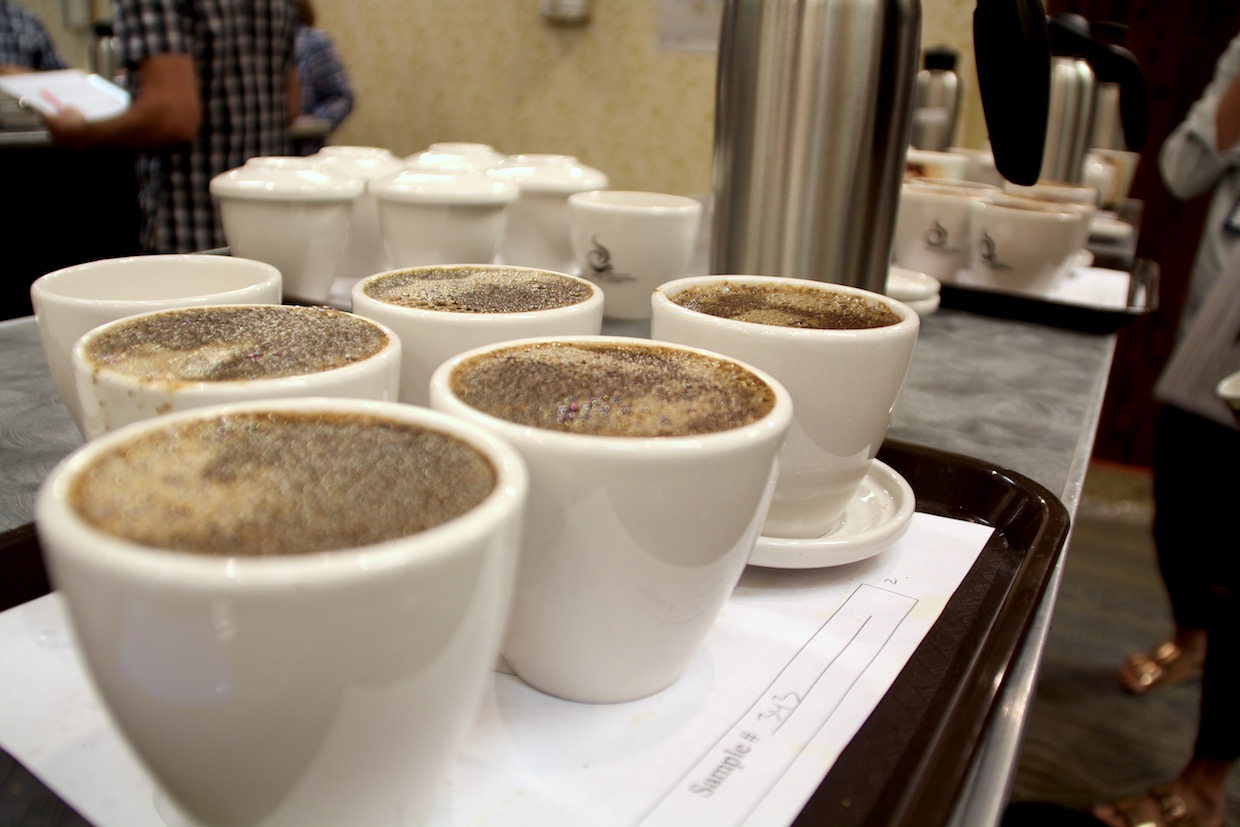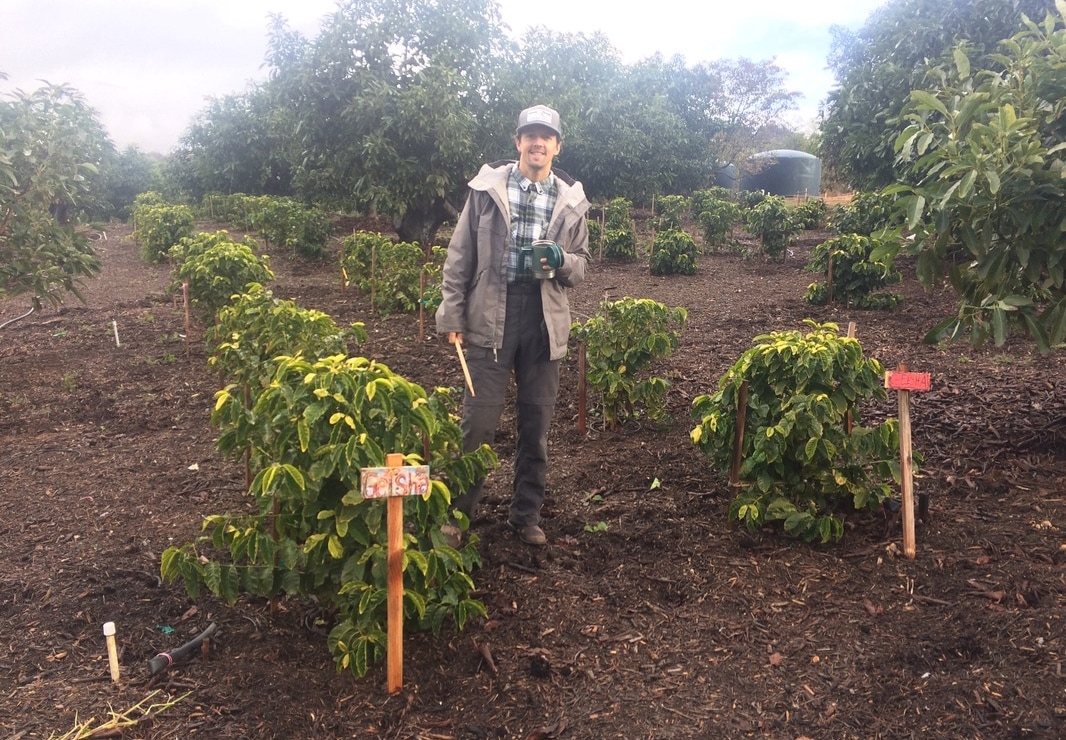Do you ever get the impression that some debates in the coffee world will live forever? We’ve got a lovely little debate conversation happening right now in the comments section of a post published earlier this week on the potential reimagining of coffee cupping competition scoring. People are getting straight up enthusiastic about this topic, and post author Shawn Steiman and DCN encourage you to join the convo as we move forward with the series.
Other ongoing battles have much broader and more dire implications — like the battles currently taking place over land use in the South American coffee-producing countries of Colombia and Peru. Despite the fact that producers in Peru have been behind some truly remarkable coffees this season, a new investigative piece from The Wire explores how in some coffeelands, the profitability of coca farming in comparison to coffee is dramatically changing the agricultural landscape and affecting its farmers:
Patricio Mamani, a coffee farmer in the Sandia Valley and former president of CECOVASA described the changes as night and day.
“There were no cars before. The town was small,” Mamani said. “Everything was very quiet and everyone helped you. You could see everyone carrying their coffee beans, happy. Everything has changed. Not only the weather but also the people. Nobody wants to work with coffee crops anymore; there is no labour, everyone works at the coca fields where they gain up to five times more than they did with coffee crops.”
This story is not new in Colombia, either, as the government has for decades worked to eradicate coca farming, particularly the large coca estates deep in the highland forests where coffee could otherwise be grown. Vice News contacted several farmers who must currently make a decision on whether to face poverty or jail time should they not follow the command of President Juan Manuel Santos to shift out of coca farming within a year’s time:
Colombian President Juan Manuel Santos has given farmers who voluntarily sign up a year to comply while the army simultaneously steps up forced eradication of large-scale farms.
Coca farmers remain skeptical the government will be able to hold their end of the bargain, and even amid the increased pressure from the government, farmers like Ricardo are hesitant to take the deal. Though he earns just $112 a month farming coca, which puts him well below the poverty line in Colombia, he says he’ll make half that growing other crops. As he watches his young daughter play in the coca leaves, he says his choice is between “poverty and prison.”
So, Jason Mraz is growing coffee. In California. Actually, the folk-reggae-blue-eyed-soul-pop (?) songwriter has had coffee plants in the ground at his at his Oceanside, Calif., Mraz Family Farms since 2015, according to this one-on-one with the San Diego Reader, alongside avocado trees and some other crops that are commercially rare to the region. Mraz has been working with a man who can safely be called the king of California coffee, Jay Ruskey, who has been promoting its agro-industrial viability through his own Good Land Organics farm. Asked whether California-grown coffee could be truly viable, Mraz replied:
Yes. I do. Specialty coffee, for specialty coffee enthusiasts. It’s for that market that’s willing to pay for a really good cup and story. I’ve paid 13 dollars for a cup of coffee. But it comes with the knowledge of the farmer, the flavor notes I’m looking for, the story of the land. I’m not just drinking a brilliant cup of coffee, I’m also drinking a story. And I think that’s what’s going to help our coffee but also our agricultural region.

“Starbucks Chairman Howard Schultz Interviewed by Vancouver’s Media” by Richard Eriksson is licensed under CC BY 2.0
Howard Schultz has Stepped Down as CEO of Starbucks to become executive chairman. So how’s he spending his days? He’s working at Starbucks. This according to a feature from Fortune on the somewhat awkward transfer of company keys from Schultz to new CEO Kevin Johnson. The piece describes how Schultz will primarily be involved in building Starbucks high-end Reserve roastery and café brand, while the company still hopes to hit $35 billion in sales within the next four years:
There’s a tension there. Schultz wants to keep serving 90 million people a day, maintain the admiration of Wall Street—and be respected by the coffee community. He’s an aficionado, and this feels personal. It’s no coincidence that his drink of choice, the double macchiato—a traditional espresso “stained” with a dash of frothy milk—is downed more often by people standing at the bar of a café in Rome than in a typical Starbucks.
Several of the world’s largest chocolate companies and certifiers have been tooting their own horns this past week for their efforts to address and/or eradicate human trafficking and slave labor in their supply chains — in a supply universe parallel to coffee’s. Providing the sheet music for all that trumpeting has been a report from the Australian nonprofit called Stop the Traffik called “A Matter of Taste.” The report itself claims that “never before have these questions been asked or the businesses compared on what they are doing.” While I’m totally sure some of these companies and certifiers are doing some outstanding work here, before you jump fully into the report, it’s important to take note of the disclaimer:
The following research is based entirely on self-reported material. It draws upon both information in the public domain and interviews, correspondence and a company-completed questionnaire. The report does not offer a third party impact assessment, but rather compares what companies and certifiers say that they are doing.
About certifications: They’re tricky business. A study newly published in the journal “Enterprise Development and Microfinance” seems to agree with just that, while exploring many of the impact assessments related to certifications in the tropical agricultural sector. Naturally the paper encourages additional research into the matter:
The evidence generated by impact studies regarding agro-food certification remains ambivalent and focuses mostly on some direct observable effects (prices, yields, wages, sales). Final impact of certification on household income and social mobility (poverty reduction) is even more difficult to ascertain, also because certified crops only represent a – sometimes small – share of land and revenue streams. In practice, only intermediate outcomes (like participation in training, access to support services, application of improved practices) are reported.
Nick Brown
Nick Brown is the editor of Daily Coffee News by Roast Magazine.
Comment
1 Comment
Comments are closed.









anyone notice jason mraz has spelled “geisha”, rather than ‘gesha’??
oops.
good thing it will only be a fad for a minute